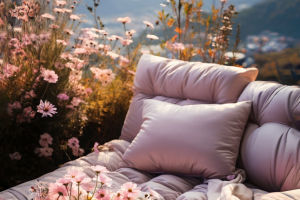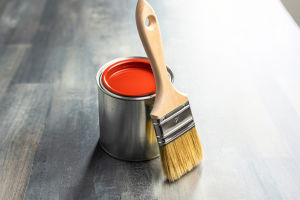Tea isn't just a drink—it's an experience! And the cup we choose plays a big role in that experience. Have you ever wondered why different tea cups have unique shapes?
From ancient times to today, tea cups have evolved, carrying history and culture in every curve. Let's dive into the fascinating world of tea cups and find out which one suits your tea-drinking style best!
Tea and Ceramics—A Perfect Match
There's an old saying: “Water is the mother of tea, and the cup is its father.” Tea and ceramics have always gone hand in hand, shaping the way we enjoy our favorite brews.
After the Qin and Han dynasties, tea drinking became more popular, and tea cups gradually separated from other everyday bowls and drinking vessels. By the Tang Dynasty, tea had become a daily ritual, embraced by scholars, monks, and even the royal family. This was when the first specialized tea cups, called tea bowls, were introduced.
Before the Ming Dynasty, tea cups looked similar to small rice bowls or drinks cups. It wasn't until the Ming and Qing dynasties that the tea cup, as we know it today, became smaller and more refined. Some people still called them "tea bowls" or "tea pots," but the shapes and sizes had evolved significantly from earlier times.
How Tea Cups Get Their Names
Tea cups are named based on their shape, especially their rim, body, and base. Let's break it down.
Types of Tea Cup Rims
The rim is the top edge of the tea cup, and it affects how the tea flows into our mouth. Here are the main types:
• Flat Rim (Straight Edge): A simple, vertical rim without any curve, found in straight-edged cups.
• Flared Rim (Open Mouth): The rim curves outward, making it easier to sip tea. A classic example is the Dou Li Cup, shaped like a bamboo hat.
• Inward Rim (Closed Mouth): The rim curves inward, which helps retain heat and aroma. These are rare but can be found in antique designs.
• Trumpet Rim (Flared Out): The rim widens outward in a smooth curve, creating an elegant look. The Ya Shou Cup is a great example.
Some rims even take on decorative shapes, like flower-shaped rims, which became popular in the Song Dynasty. These designs mimic flowers like hollyhocks or crabapples, adding beauty to the tea-drinking experience.
Types of Tea Cup Bodies
The body of the tea cup affects how heat is retained and how the aroma gathers. Here are some common styles:
• Straight Body: The cup walls stand upright, creating a clean and modern look.
• Rounded Body: The walls gently curve outward, like a small drum, helping to concentrate the tea's aroma.
• Curved-In Body: The cup's middle curves inward slightly, making it easy to hold and keeping the tea warm longer.
• Indented Body: A design with visible grooves, sometimes called melon ribbed cups because of their resemblance to a melon's surface.
• Folded Waist (Waist-Indented): A shape with a clear inward fold near the middle, giving it a unique silhouette.
Types of Tea Cup Bases
The base of a tea cup determines how stable it sits on a surface. Here are a few key types:
• Ring Base (Footed Base): The most common type, with a circular foot at the bottom.
• Flat Base: No foot, just a smooth bottom—common in old celadon-style cups.
• Concave Base: The center of the base is slightly sunken, known as the Wo Zu Cup style.
• Jade Disk Base: A thick ring base resembling a jade disk, often seen in Longquan kiln ceramics.
Exploring Different Tea Cup Styles
Now, let's look at some of the most well-known tea cup designs. Each has its own unique charm and function!
• Ya Shou Cup: A refined design with a slightly flared rim, ensuring a comfortable grip and smooth tea flow.
• Dou Li Cup: Named after a traditional hat, this wide-rimmed cup makes tea cooling easier.
• Zhe Yao Cup: With a distinct "waist" shape, this cup is designed for a comfortable hold and balanced heat retention.
• He Xian Cup (Rounded Harmony Cup): The slightly rounded body enhances aroma concentration and improves the tea-drinking experience.
• Si Fang Cup (Square Cup): Popular in the Ming Dynasty, this cup requires skilled craftsmanship to create its precise edges.
• Ji Gang Cup (Chicken Cup): This famous design from the Ming Dynasty features painted roosters and flowers. It's a collector's favorite!
• Gao Zu Cup (Tall-Footed Cup): A cup with a tall, elegant foot, giving it a graceful silhouette.
• Ji Xin Cup (Chicken Heart Cup): A deep, rounded cup with a heart-like dip in the center.
• Luo Han Cup (Arhat Cup): Inspired by Buddhist figures, this cup often features intricate painted details.
• Ling Dang Cup (Bell Cup): Also known as the Gold Bell Cup, this design resembles an upside-down bell.
• Ma Ti Cup (Horse Hoof Cup): A cup with a slanted base and wide opening, giving it a distinctive look.
Choosing the Perfect Tea Cup
Which tea cup should we choose? It depends on what we're looking for!
• For Aroma Lovers: A slightly closed rim (like a Ji Xin Cup) helps trap scents.
• For a Smooth Sip: A flared rim (like a Ya Shou Cup) lets tea glide effortlessly.
• For a Cozy Feel: A rounded body (like a He Xian Cup) keeps the tea warm and enhances flavor.
• For Aesthetic Beauty: Classic painted designs, like the Ji Gang Cup, add artistic value.
Find Your Perfect Cup!
Tea cups are more than just containers; they shape our tea-drinking experience, from how the aroma gathers to how the tea touches our lips. Whether we prefer a simple straight-edge cup or a beautifully painted Ji Gang Cup, each style tells a story of tradition and craftsmanship.
Which tea cup style do you love the most? Let's chat in the comments, Lykkers! Do you have a favorite design or a tea-drinking tradition you'd like to share? Let's keep the conversation brewing! 🍵😊


